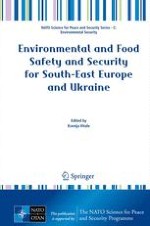2012 | OriginalPaper | Chapter
14. Electrochemical Incineration of Some Phenolic Compounds and MTBE
Authors : Alexander Velichenko, Tatiana Luk’yanenko, Larisa Dmitrikova, Rossano Amadelli
Published in: Environmental and Food Safety and Security for South-East Europe and Ukraine
Publisher: Springer Netherlands
Activate our intelligent search to find suitable subject content or patents.
Select sections of text to find matching patents with Artificial Intelligence. powered by
Select sections of text to find additional relevant content using AI-assisted search. powered by
